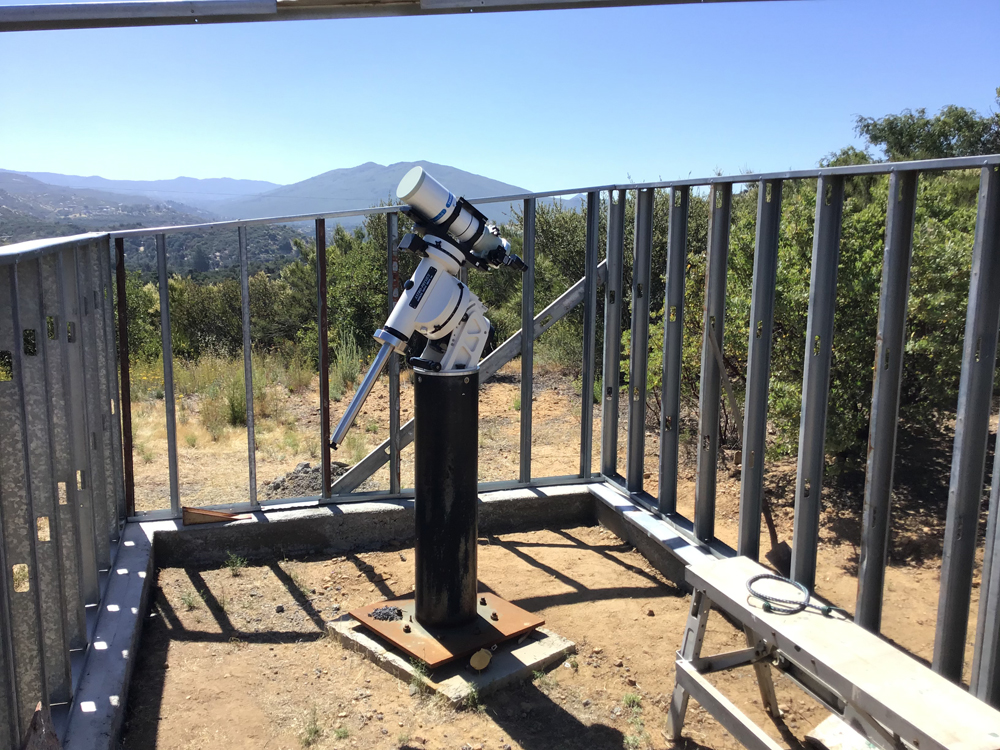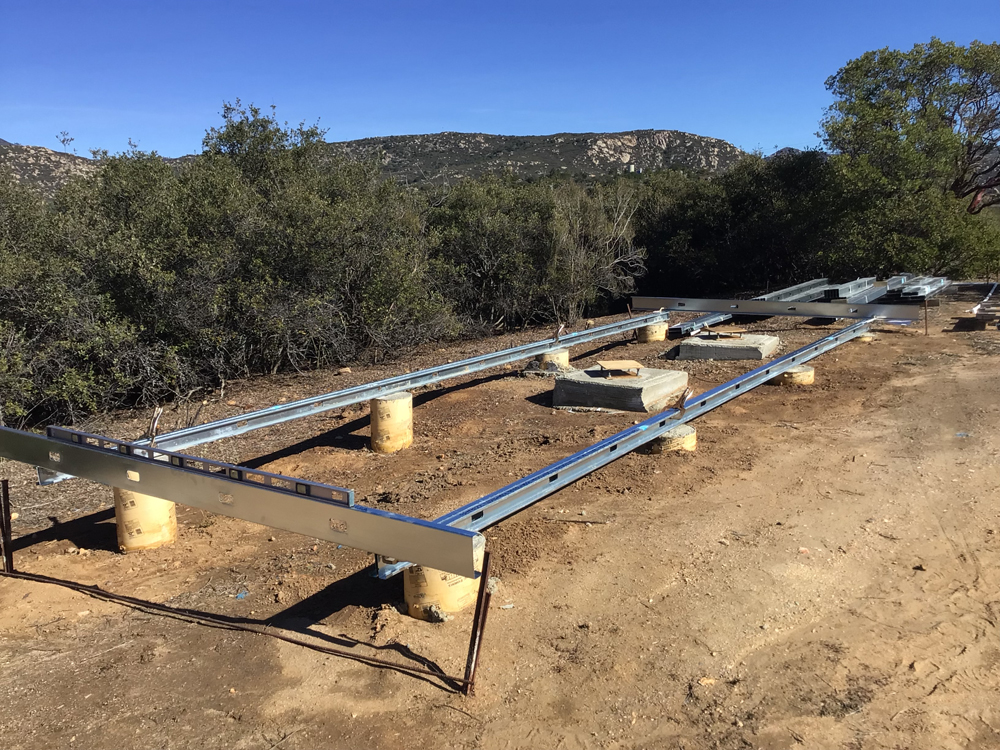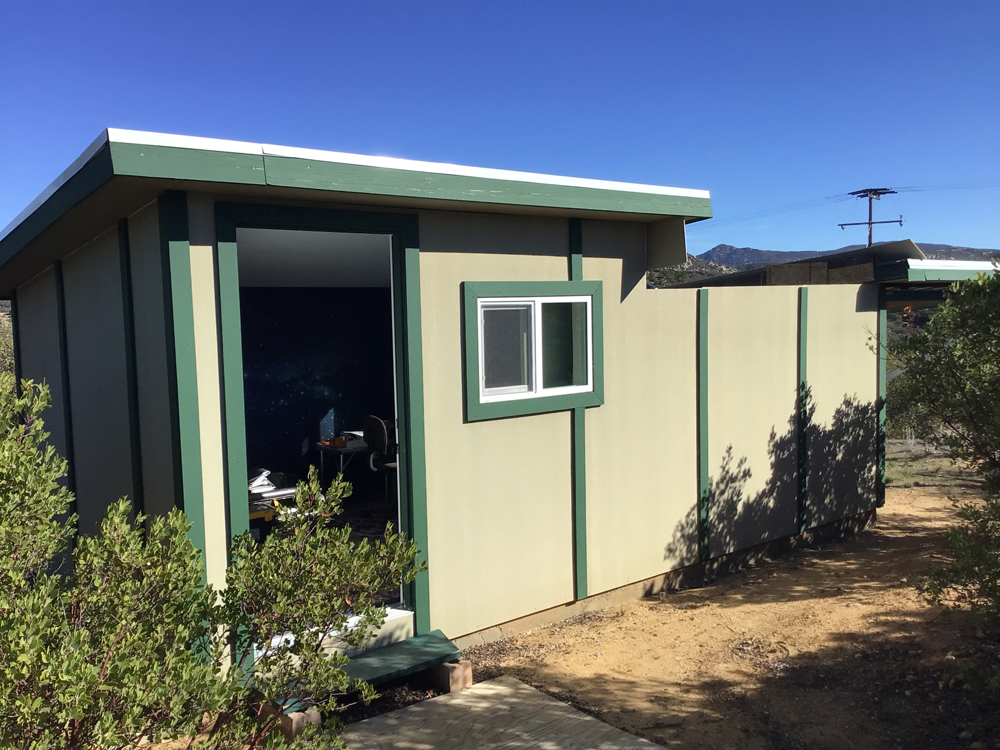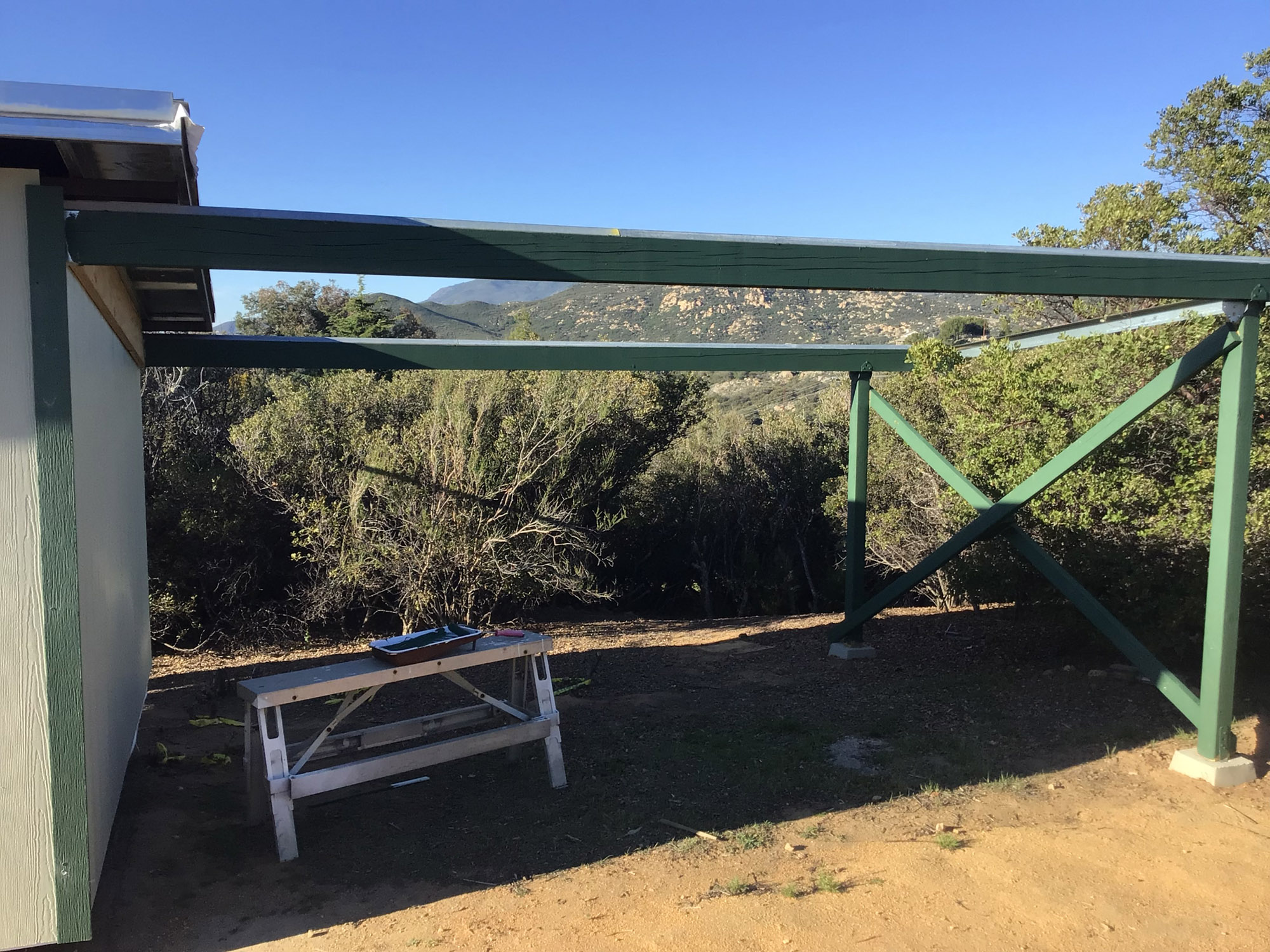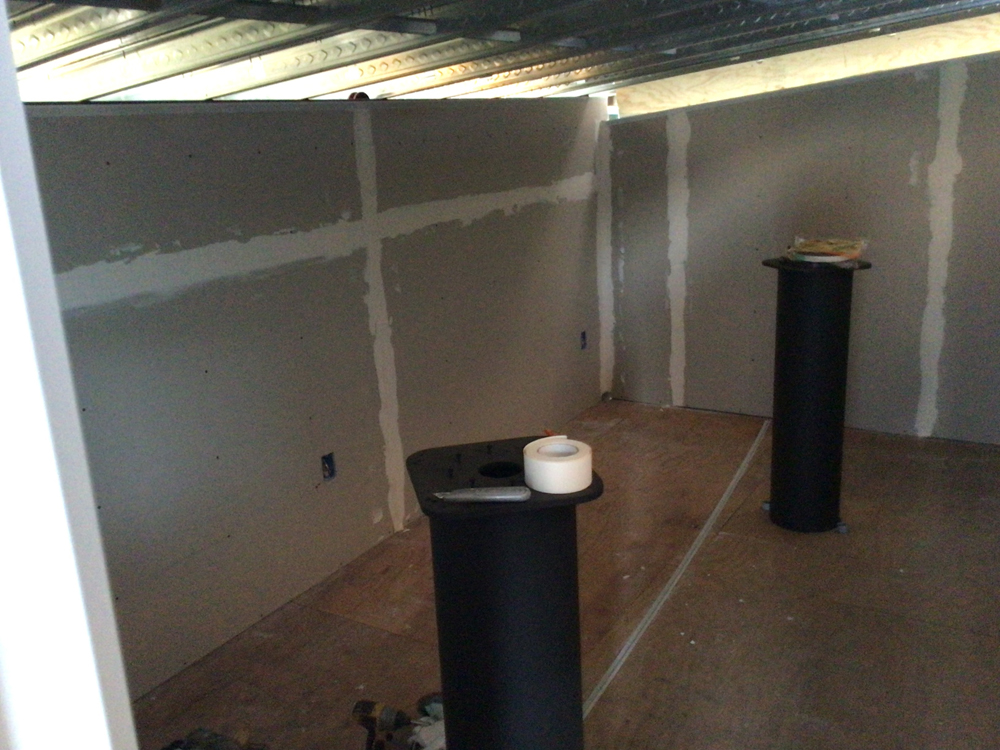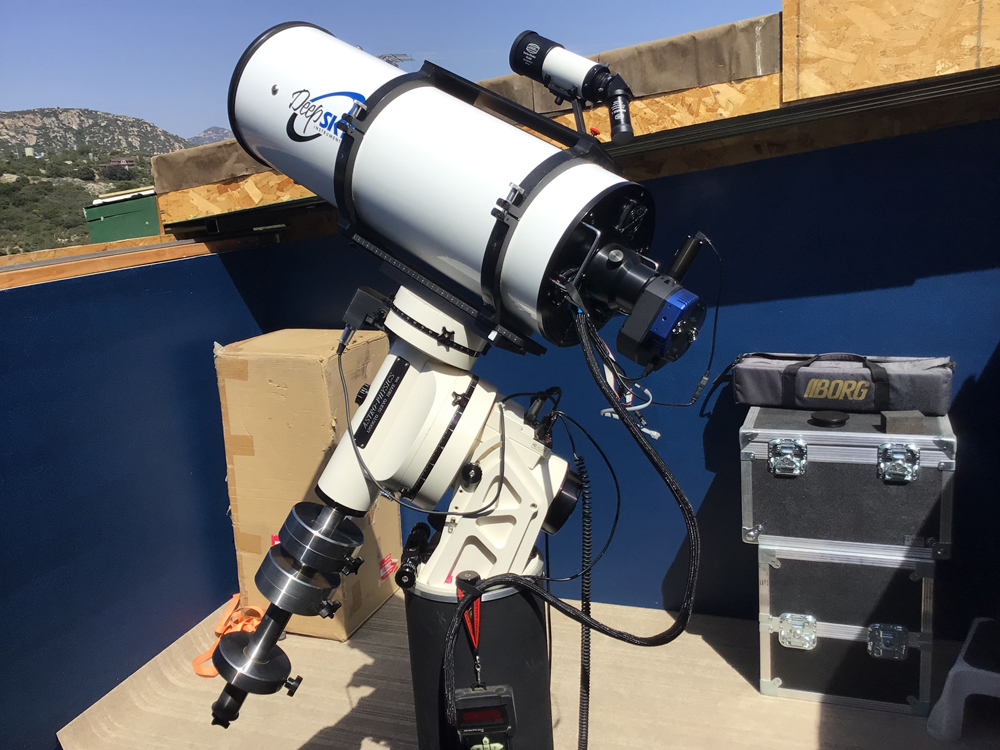Greetings to the community,
I've been thinking for some time now about building my own observatory. At the moment, I have three setups in my backyard. These are out 24/7. The first one is out there for about two years now. Everything is covered with Telegizmo 365 covers. It's great to have pemanent setups, but my solution has obviously some drawbacks. So I'm planning for a building with a roll of roof. This way I should be able to protect the equipment if there is rain out there without leaving the house.
During the last months I tried different things on the technical side. I got two old motors that should be able to move the roof. I planned for descent power supplies and got some sensors to watch the current consumption of all my rigs. I am able to power on or off all three of my imaging PCs seperately. So they are all indepentent from each other in case I have trouble with one of them. I could fix the problems (hopefully remotely), while the other two keeps getting images. I even build a small weather station that monitors the sky and that is able to generate a save/unsafe condition for NINA, which I am using. I tried to control everything from my Home Assistant computer. I also be able to open or close the roof from NINA. So this part is quite clear and should work fine for what I am able to check in advance.
While I'm interested in all the electronic stuff, it's now time to do my homework with the main part of the project. And here I ran into some trouble. Maybe you can share some of your experiences to help me plan the main building. I guess, I may not be able to build it until the end of this year. But that's ok. It offers me some time to think about it properly.
My backyard is quite big. The problem is, that it's placed on a quite steep mountain side. It's in the middle of a small town. So light pollution is a bit of a problem. But I don't care too much about it, yet, because there's no solution for this right now. So I have to live with that. But the steep mountain side is pushing some limits. I need to place all three setups (maybe I should plan only for two) in a single row. There is no place to get a more squared footprint for the building. I am able to dig about half a meter into the ground before I hit some massive stones. But building a long observatory may not be the worst option, because the roof doesn't need to be that stable. It has a span of maybe two metersat the end, which helps to keep its weight down.
So: a lot of explanation. But you should be able to imagine my situation. So here are some questions I'm interested in:
How far apart should the setups be? What is your experience here? On one hand, I want to keep the footprint of the house as small as possible, on the other hand, I need enough space so the telescopes may not interfere with each other.
I my be able to build two of the three piers I planned until the end of the year and use them during the winter months. Beside the question, how far apart they may be placed, I want to know a reasonable height as well. The walls of the building should be high enough to walk through the room without ducking (is that the right word?). So I guess, the walls must be about 1,90m to 2m in height. I assume, some of you have walls that high, too. So how high should the piers be? I am using two EQ6s at the moment. I may upgrade to an EQ8 or similar later on. The height is really important, because the piers will be made of concrete and I may not be able to change it, soon.
The best option for me at the moment is to build the observatory comletely from wood. What are your experiences with this material? What problems did occur and how reliable is this material inyour opinion?
Are there any things you want to share with me, that I have to be aware of?
It would be nice to get some comments on this. It may help me a lot to build this observatory and maybe do it right with the first try. I guess, there may be no other try after this one.
So thanks to all of you who may answer
CS
Christian
I've been thinking for some time now about building my own observatory. At the moment, I have three setups in my backyard. These are out 24/7. The first one is out there for about two years now. Everything is covered with Telegizmo 365 covers. It's great to have pemanent setups, but my solution has obviously some drawbacks. So I'm planning for a building with a roll of roof. This way I should be able to protect the equipment if there is rain out there without leaving the house.
During the last months I tried different things on the technical side. I got two old motors that should be able to move the roof. I planned for descent power supplies and got some sensors to watch the current consumption of all my rigs. I am able to power on or off all three of my imaging PCs seperately. So they are all indepentent from each other in case I have trouble with one of them. I could fix the problems (hopefully remotely), while the other two keeps getting images. I even build a small weather station that monitors the sky and that is able to generate a save/unsafe condition for NINA, which I am using. I tried to control everything from my Home Assistant computer. I also be able to open or close the roof from NINA. So this part is quite clear and should work fine for what I am able to check in advance.
While I'm interested in all the electronic stuff, it's now time to do my homework with the main part of the project. And here I ran into some trouble. Maybe you can share some of your experiences to help me plan the main building. I guess, I may not be able to build it until the end of this year. But that's ok. It offers me some time to think about it properly.
My backyard is quite big. The problem is, that it's placed on a quite steep mountain side. It's in the middle of a small town. So light pollution is a bit of a problem. But I don't care too much about it, yet, because there's no solution for this right now. So I have to live with that. But the steep mountain side is pushing some limits. I need to place all three setups (maybe I should plan only for two) in a single row. There is no place to get a more squared footprint for the building. I am able to dig about half a meter into the ground before I hit some massive stones. But building a long observatory may not be the worst option, because the roof doesn't need to be that stable. It has a span of maybe two metersat the end, which helps to keep its weight down.
So: a lot of explanation. But you should be able to imagine my situation. So here are some questions I'm interested in:
How far apart should the setups be? What is your experience here? On one hand, I want to keep the footprint of the house as small as possible, on the other hand, I need enough space so the telescopes may not interfere with each other.
I my be able to build two of the three piers I planned until the end of the year and use them during the winter months. Beside the question, how far apart they may be placed, I want to know a reasonable height as well. The walls of the building should be high enough to walk through the room without ducking (is that the right word?). So I guess, the walls must be about 1,90m to 2m in height. I assume, some of you have walls that high, too. So how high should the piers be? I am using two EQ6s at the moment. I may upgrade to an EQ8 or similar later on. The height is really important, because the piers will be made of concrete and I may not be able to change it, soon.
The best option for me at the moment is to build the observatory comletely from wood. What are your experiences with this material? What problems did occur and how reliable is this material inyour opinion?
Are there any things you want to share with me, that I have to be aware of?
It would be nice to get some comments on this. It may help me a lot to build this observatory and maybe do it right with the first try. I guess, there may be no other try after this one.
So thanks to all of you who may answer
CS
Christian
